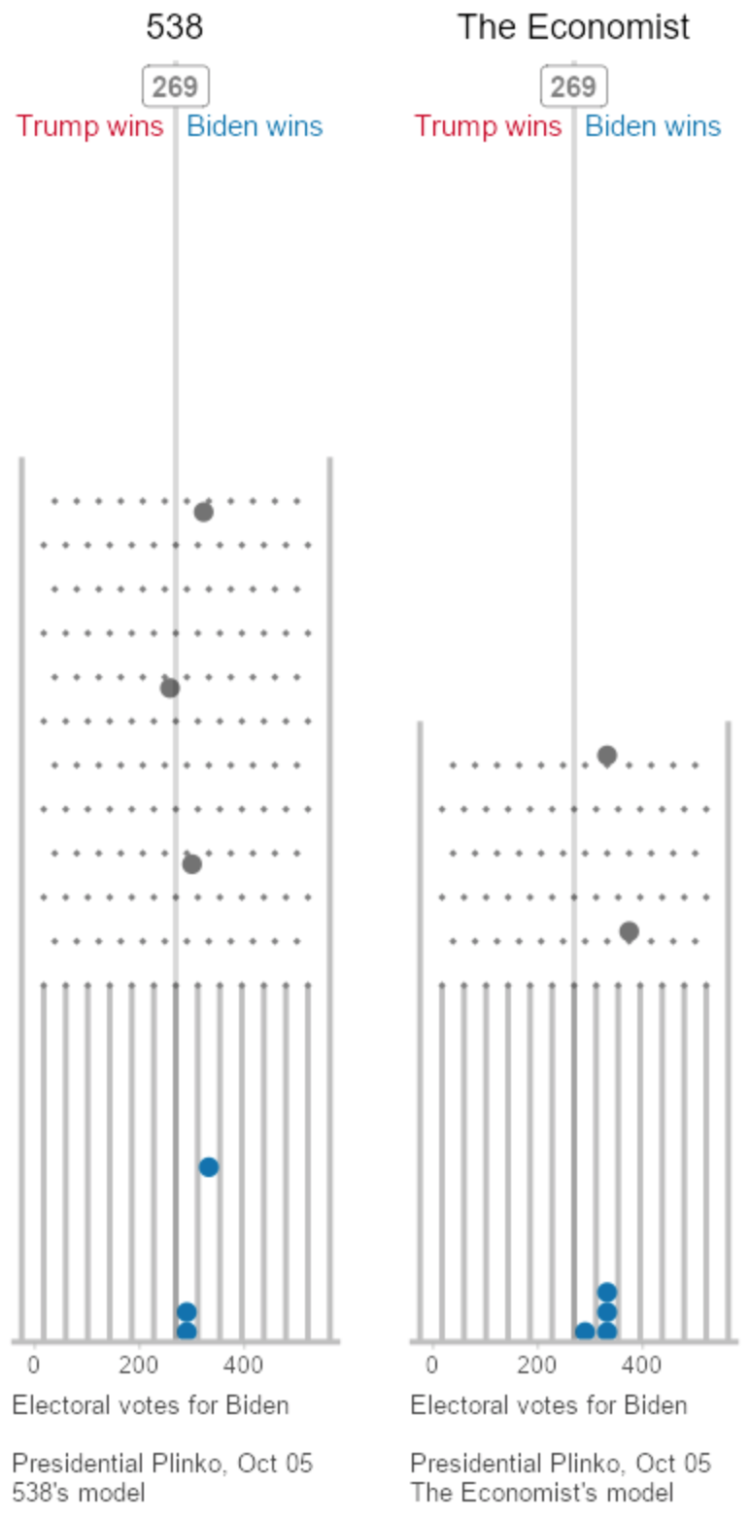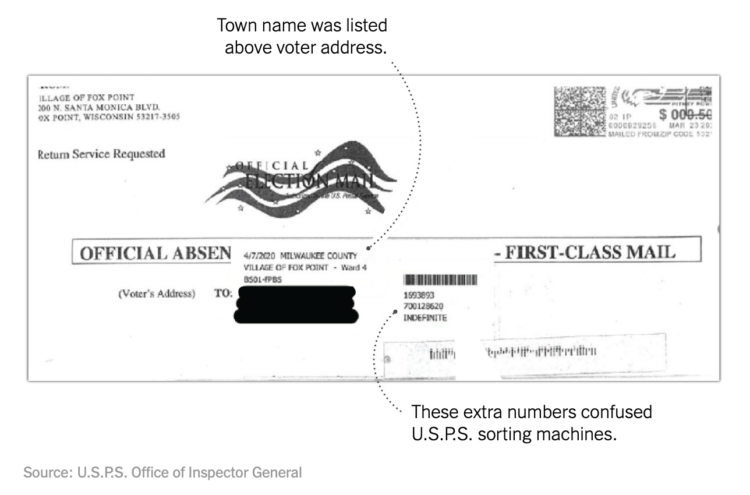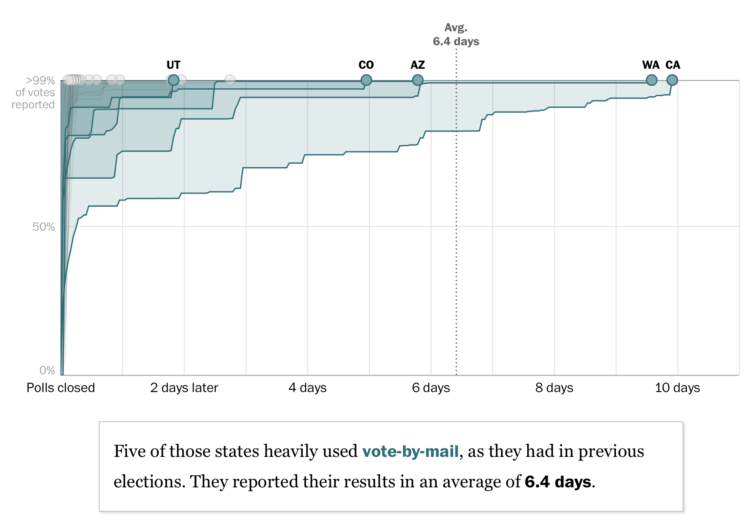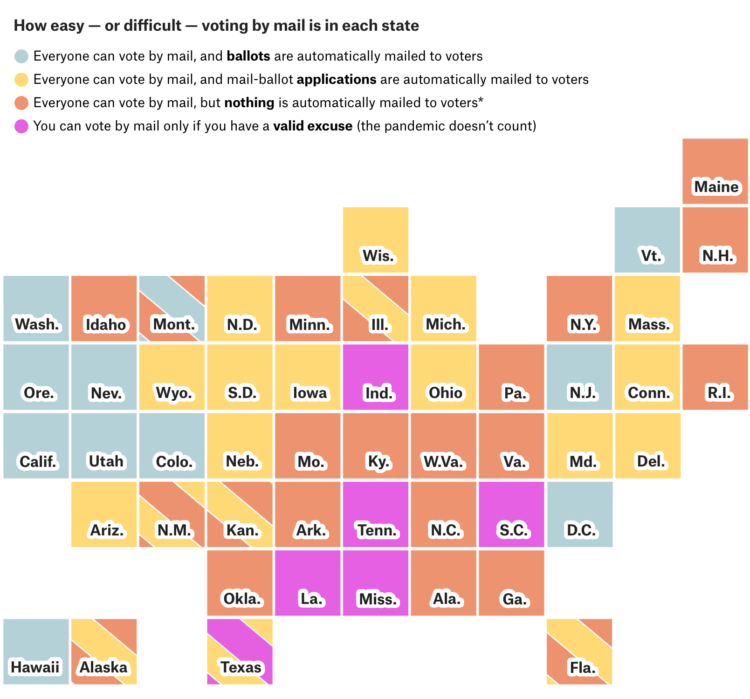For FiveThirtyEight, Nate Silver provides tips to stay less stressed staring into the darkness known at election forecasts:
This is perhaps the single piece of advice we give most often at FiveThirtyEight, but it’s especially important in the final couple weeks of a campaign. After a lull this weekend, there are likely to be a lot of polls the rest of the way out. On any given day, it will be possible to take the two or three best polls for Biden and tell a story of his holding or expanding his lead, or the two or three best polls for Trump and make a claim that the race is tightening.
Resist buying too much into those narratives.
Good luck.
Tags: election, FiveThirtyEight, forecast
 To visualize uncertainty in election forecasts, Matthew Kay from Northwestern University used a Plinko metaphor. The height of each board is based on the distribution of the forecast, and each ball drop is a potential outcome. The animation plays to eventually shows a full distribution.
To visualize uncertainty in election forecasts, Matthew Kay from Northwestern University used a Plinko metaphor. The height of each board is based on the distribution of the forecast, and each ball drop is a potential outcome. The animation plays to eventually shows a full distribution.






